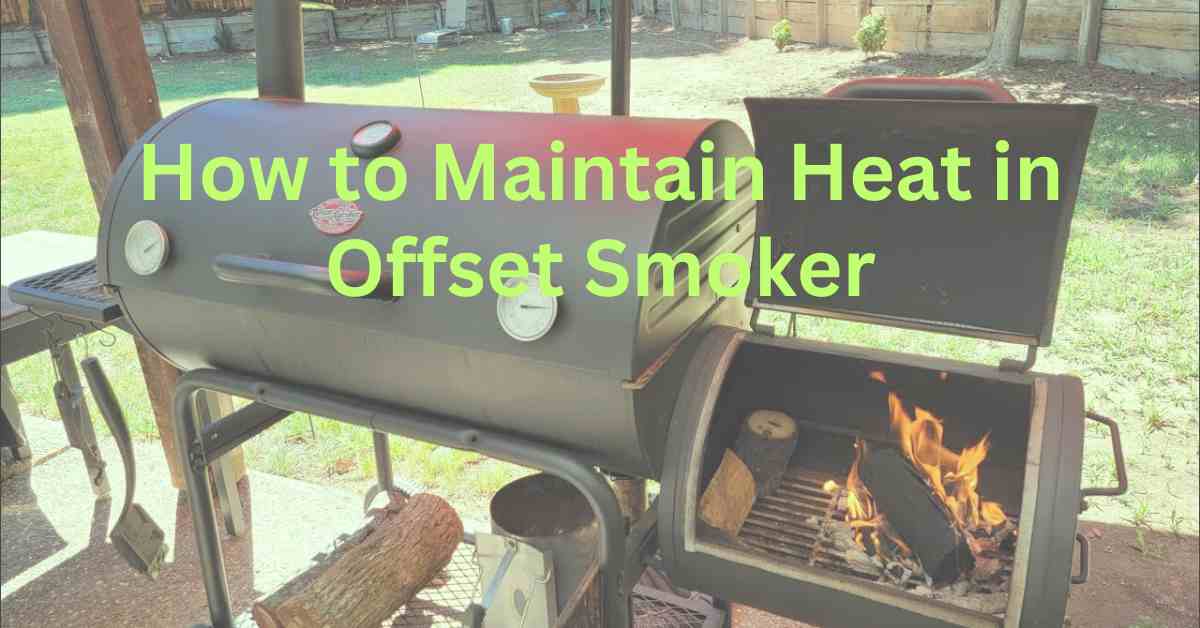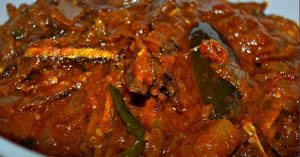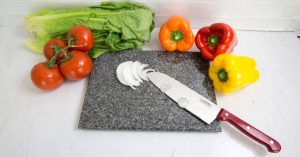Offset smokers are well-known as barrel smokers or horizontal smokers. It also offers a traditional and authentic approach to slow-cooking meats over indirect heat while infusing them with rich, smoky aromas. In this guide, we will delve into how to maintain heat in offset smoker and the fundamental techniques and strategies to ensure that your offset smoker remains at the optimal temperature. It also lets you produce a mouthwatering, moist barbecue whenever you fire your smoker. We will also write to understand how to control offset smoker temperature and elevate your grilling prowess to new heights. Suppose you will join us as we explore the ins and outs of smoker fire management, airflow control, and other crucial factors contributing to a delicious barbecue experience.
Table of Contents
Understand maintaining heat in offset smokers.
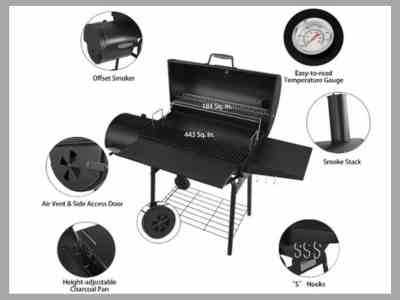
Maintaining heat in and controlling temp on offset smoker is a delicate art that can greatly improve your barbecue results. Here is a to-the-point overview of how to maintain heat in offset smoker.
Fire Management:
It would help if you had to well fire management for offset smokers and started with a well-lit fire using a combination of charcoal and wood chunks. You must arrange unlit charcoal in the firebox and add pre-lit pieces strategically for sustained heat.
Airflow Control:
You need to adjust intake and exhaust dampers to regulate oxygen flow. If you want to, more oxygen increases heat while less cool it down. You need to maintain a balance to achieve your desired temperature.
Thermometer Use:
If you want to properly control your need for a thermometer, place a reliable thermometer in the smoking chamber to monitor internal temperature. It prevents over- or undercooking and helps you make timely adjustments.
Sealing and Insulation:
Ensure your smoker is properly sealed and insulated to prevent heat leakage and promote consistent temperature and efficient fuel use.
Patience and Practice:
Perfecting heat maintenance takes time, and it is patient to keep experimenting with different techniques and settings to find what works best for your smoker.
Wind and Weather:
Wind can affect temperature stability for external factors like wind and weather, so choose a sheltered location if possible.
Fuel Monitoring:
You need to monitor fuel levels to prevent temperature drops and add charcoal or wood as required to maintain steady heat.
Water Pan Usage:
Consider using a water pan inside the smoking chamber. It helps stabilize temperatures and add moisture to the cooking environment.
Preheating:
Allow your smoker to preheat before placing meat inside; it helps maintain a consistent cooking environment.
Regular Checks:
Stay engaged during the cooking process. Regularly monitor temperature, adjust dampers, and add fuel as necessary.
Maintaining heat in an offset smoker involves managing fire, adjusting airflow, using thermometers, sealing the smoker, and adapting to weather conditions. Practicing and paying attention to detail, you’ll achieve the steady and controlled heat necessary for delicious, perfectly smoked meats.
Choosing the right fuel for optimal heat management
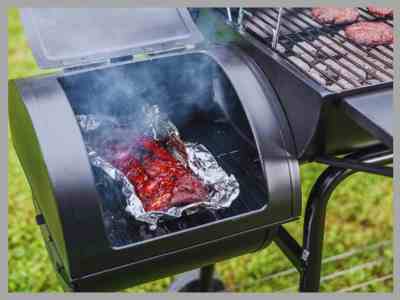
Choosing the right fuel for your offset smoker is essential for achieving optimal heat management and producing delicious barbecue. The type of fuel you select will influence the flavor, temperature control, and overall cooking experience. Here is a breakdown of different fuel options and their impact on heat management:
Charcoal:
- Charcoal briquettes or lump charcoal are popular choices.
- It provides steady, consistent heat and burns relatively evenly.
- Easier to control temperature compared to wood alone.
- Suitable for longer smoking sessions due to their extended burn time.
- It will produce a cleaner burn with less as compared to some woods.
Wood Chunks:
- Wood chunks like hickory, oak, apple, and cherry are used for flavor and heat.
- It offers a rich, smoky flavor that enhances the taste of meats.
- Requires careful management to prevent temperature spikes and maintain consistency.
- Best used in combination with charcoal for controlled heat.
Large Wood Logs:
- Larger wood logs are typically used for stick-burning smokers.
- It will provide an intense smoky flavor and authentic barbecue taste.
- Requires skillful fire management to prevent overheating and temperature fluctuations.
- Often used by experienced pitmasters due to the challenges of maintaining consistent heat.
Wood Pellets:
- Wood pellets are compressed wood sawdust available in various flavors
- It Offers convenience and precise temperature control, similar to charcoal.
- Ideal for pellet smokers who automate temperature adjustments.
- It imparts a flavorful smokiness while maintaining steady heat levels.
Combination of Fuels:
- Many pit masters use a variety of charcoal and wood for balanced heat and flavor.
- Start with a base of charcoal for consistent heat, then add wood chunks or chips for smokiness.
- This combination provides control and enhances the taste of your barbecue.
Pre-Lit Chimney Starter:
- Pre-lit chimney starter of charcoal can be added periodically for a quick heat boost.
- Useful during longer smoking sessions to maintain temperature without relighting the entire firebox.
Controlling airflow to regulate temperature
Controlling airflow is a fundamental technique for regulating a smoker temperature controller. Properly managing airflow allows you to increase or decrease the fire’s intensity, directly affecting the smoker’s internal temperature. Here’s how to maintain heat in offset smokers and also control them effectively:
Understanding Airflow:
- Airflow is controlled through intake and exhaust dampers on the smoker.
- The new damper controls the amount of oxygen entering the firebox, while the exhaust damper lets out smoke and heat from the cooking chamber.
Start with Fully Open Dampers:
- Begin with the intake and exhaust dampers fully open to establish a strong fire and raise the temperature quickly.
Closing Dampers to Lower Temperature:
- If the temperature rises too quickly or exceeds your target, gradually close the intake damper.
- Reducing oxygen intake will slow combustion and lower the fire’s intensity, thus decreasing temperature.
Opening Dampers to Raise Temperature:
- If the temperature is too low, open the intake damper slightly to allow more oxygen to feed the fire and increase its intensity.
Balancing Airflow:
- Fine-tune the temperature by adjusting both the intake and exhaust dampers simultaneously.
- If you adjust one without the other, you can disrupt the balance of oxygen and smoke flow, affecting the quality of the smoke and the overall cooking process.
Using the Exhaust Damper:
- While the intake damper primarily controls the fire’s intensity, the exhaust damper influences the escape of smoke and heat.
- A partially open exhaust damper can help release excess heat and smoke, preventing temperature spikes.
Monitoring and Patience:
- Adjust the dampers gradually, as changes may take time to reflect in the smoker’s internal temperature.
- Monitor the thermometer readings closely to understand how your adjustments impact the temperature.
Weather and Wind Considerations:
- Wind and weather conditions can influence airflow and temperature control.
- Adjust dampers accordingly to compensate for changes in external factors.
Water Pan Usage:
A water pan inside the smoking chamber can help regulate temperature by acting as a heat sink and stabilizing fluctuations.
Practice Makes Perfect:
- Achieving mastery in controlling airflow for temperature regulation takes an approach.
- Experiment with different damper settings to understand how they impact your smoker.
Remember that airflow control is a skill of yours that improves with experience. It is also patient and attentive to the smoker’s behavior. Over time, you’ll develop an intuitive sense of adjusting the dampers to achieve and maintain your desired cooking temperature.
Conclusion and final tips for how to maintain heat in offset smoker
In conclusion, mastering heat maintenance in an offset smoker is a critical skill that can elevate your barbecue game to new heights. You need always start with a clean smoker and remove ashes, grease, and residue to ensure proper airflow and heat distribution.
Recent Posts You May Like:
- How to Cook Khichuri Easy Way at Home
- What is the Best Wood for an End Grain Cutting Board?
- How Long to Cook Frozen Fish Fillets In an Air Fryer Perfectly
- How to Clean Non Stick Pans with Burnt on?
- How to Cook Dry Fish Curry at Home
- How to Use Baby Brezza Food Maker
- How to Cleaning Cuisinart Coffee Grinder?
- Instant Pot Air Fryer Lid Recipes Chicken Wings
- Granite Cutting Board Pros and Cons and Buying Guideline
- Dutch Oven Recipes for Chicken – Yummy Food
- How to Cook Vegetable Curry an Easy Recipe
- What Type of Cookware Should be Used on a Glass Cooktop?
